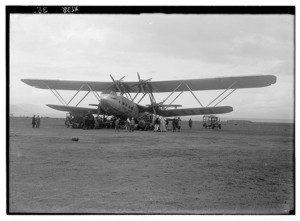World War 1
Aviation
Paul Frank Baer
1st Lt., WWI ACE
Allen County, Indiana
103rd Aero Squadron, Lafayette Escadrille
Credited with nine confirmed victories and an additional seven, unconfirmed.
First Ace of the American Expeditionary Forces
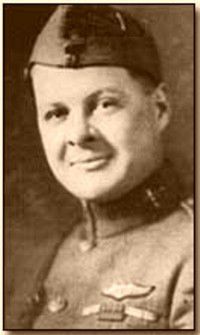
Paul Frank Baer
First lieutenant, 102nd Aero Squadron, Air Service
Croix de Guerre with 7 Palms
Distinguished Service Cross with 1 Oak Leaf
French Legion of Honor
Germany: Prisoner in five different prisons. Was shot through the knee and terribly injured in fall. Escaped once, but was recaptured. Released after signing of the armistice. Battles: Verdun, Aisne, Cambria, Champagne, Flanders
Previous service: Served with General Pershing's column in a punitive expedition into Mexico in pursuit of Poncho Villa, 1916, serving with truck train #43. Later commanded the unit.
Professions: Aviator, Oil business ( San Antonio, Texas)
Credited as an ACE with 9 “kills”. http://aerofiles.com/acesww1.html
Note: Enlisted in the French army in February 1917. Transferred to American Army, January 1918. First Yankee ACE, and first to be awarded Distinguished Service Cross. Note: The Fort Wayne International airport is located on the site of Baer Field, originally a WWII airfield named after Lt. Baer.
Credited as an ACE with 9 “kills”.http://aerofiles.com/acesww1.html
Note : Enlisted in French army February, 1917. Transferred to American Army, January, 1918. First Yankee ACE, and first to be awarded Distinguished Service Cross. Note: The Fort Wayne International airport is located on the site of Baer Field, originally a WWII airfield named after Lt. Baer. INDIANA HISTORICAL COLLECTIONS
Distinguished Service Cross with oak leaf cluster General Orders No. 128, War Department, 1918: Northeast of Reims, France, March 11 and 16, 1918. On March 11, 1918, he attacked, alone, a group of seven enemy pursuit machines, destroying one which fell near the French lines northeast of Reims,
Oak-leaf cluster He was awarded a bronze oak leaf for the following acts of extraordinary heroism in action: He brought down enemy planes on April 5, 12, and 23, 1918, and on May 8, 1918, he destroyed two German machines, and on May 21, 1918, he destroyed his eighth enemy plane.
Legion of Honor, Chevalier (France), By Presidential Decree of April 9, 1918. No specific citation of record.
Paul Frank Baer (continued):
Croix de Guerre with seven palms (
First palm General Order No. 1259, April 8, 1918, 4th French Army: A volunteer American pilot in the French Army, who immediately demonstrated the skill of the first order. He fought numerous combats during which he always put the enemy to flight. He brought down one enemy airplane.
Second palm General Order No. 1260, April 11, 1918, 4th French Army: A pilot of marvelous ardor who engaged in combat on every flight. On April 6 he had three fights with an enemy superior in number in the course of which one of the enemy planes went down in flames and two others fell damaged within their lines.
Third palm General Order No. 1260, April 11, 1918, 4th French Army: A pilot of wonderful daring, he never hesitates to engage in combat with an enemy superior in numbers. He has brought down an enemy airplane (second victory in four days).
Fourth palm General Order No. 5715, April 30, 1918, 6th French Army: A pilot of the very first order Who constantly distinguished himself by his boldness. Within a period of four days, he succeeded in bringing down two enemy airplanes.
Fifth palm General Order No. 7, May 11, 1918, Detachment of the French Amy of the North: A remarkably daring pilot who on the same day executed six pursuit flights in the course of which he shot down two enemy airplanes.
Sixth palm General Order No.16; June 4, 1918, Detachment of the French Amy of the North: He shot down his eighth enemy airplane and on the following day, within the enemy lines, unhesitatingly attacked a patrol superior in number with which he fought desperate combat during the course of which he disappeared.
Seventh palm Order No.17.522 “D”, May 17, 1919, General Headquarters, French Armies of the East: A courageous and skillful pilot who was a very fine example for his comrades of the LaFayette Squadron. He shot down nine enemy airplanes.
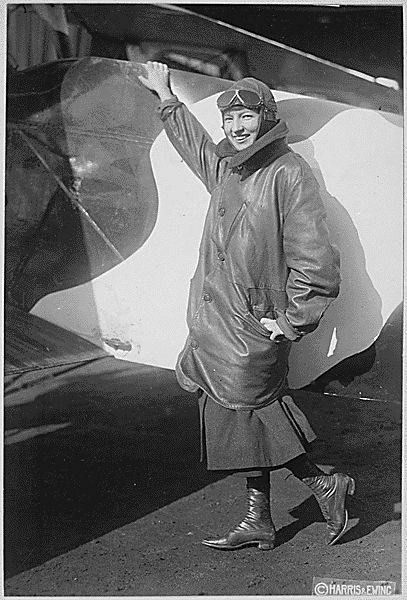
Marjorie Stinson
In 1915 she was the only woman admitted to the UA Aviation Reserve Corps. In 1916 the Royal Canadian Corps began sending their cadets to the Stinson School for their training, where she was referred to as "The Flying Schoolmarm" and her students as the "Texas Escadrille"
Photo Analysis Lab
Interior view of the Laboratory Office and Negative File of the
U.S. Army Aerial Photographic Laboratory (undated) (Ed note: WW1 or WW2?) US Signal Corps photo
Troop movements, maps, charts, arterial placements, geographic advantages or disadvantages, could be analyzed for the maximum efficiency of the Allies resources.
.
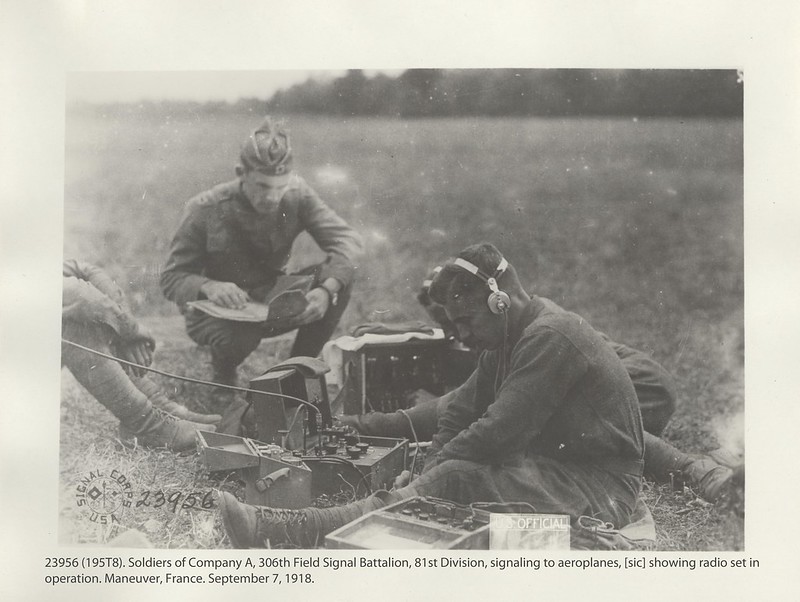
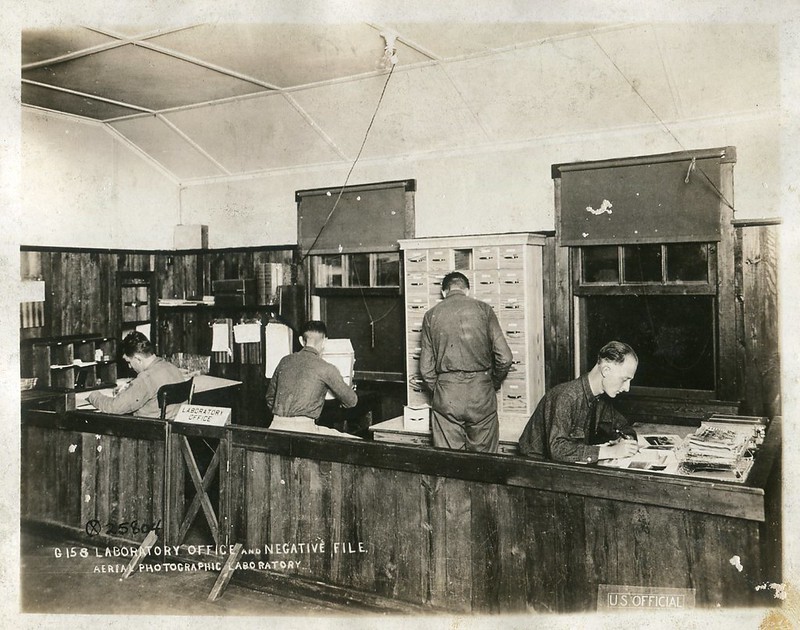
View of soldiers of Company A, 306th Signal Battalion, 8AIR1st Division, U.S. Army, signaling to aeroplanes, using a radio set and operating at Maneuver, France, on September 7, 1918.
US Signal Corps Photo
In May 1918 a section of Historical records was formed. Col Earnest L Jones was put in charge. Col Jones was a Curtiss Pusher pilot, had published a magazine titled "Aeronautics" and served as an intelligence officer in the Signal Corps Aeronautics division prior to the war. He had served in France organizing what evolved into the information section of the Air Service. He was responsible for the collection, distribution, and preservation of technical and military data and now was appointed historian.
All records of the Air Service were collected, orders, bulletins, documents statistics, and memoranda. Record accumulation was expanded to included activities in Europe. Col Jones wanted accounts of air battles, deeds, and "the human story" of the men who participated. "Every effort should be made to present the facts of dramatic, comic or tragic interest tales of obstacles overcome, of discouraging conditions, of problems of personnel, equipment, supplies, transportation or maintenance, or tests and experiments that may have historical value."
US Air Service in WW1, Vol 1 The Final Report and A Tactical History of the Air Service, AEF
US Government Printing Office, 1921
1st Lieut. Thomas James Abernathy
Distinguished Service Cross &
Croix de Guerre
Officially credited with the destruction of 3 enemy airplanes
"For extraordinary heroism and action near Vourbin, France. Lieut. Thomas J Abernathy, while on patrol duty attacked an enemy airplane at close range, firing 100 rounds at a distance of from 50 to 200 yards. He followed the German ship down and saw it fall out of control, as he turned he found 5 enemy airplanes diving at him. Without hesitation, he took the offensive and fired 200 rounds into the enemy ships at not more than 15 to 20 yards. He observed tracer bullets entering the bodies of the enemy aircraft, but owing to the violence of the combat he did not have time to observe whether any of his foes were shot down. Fighting vigorously, he succeeded in dispersing the enemy ships, and making a safe landing within his own lines, although his own engine and plane were almost shot to pieces."
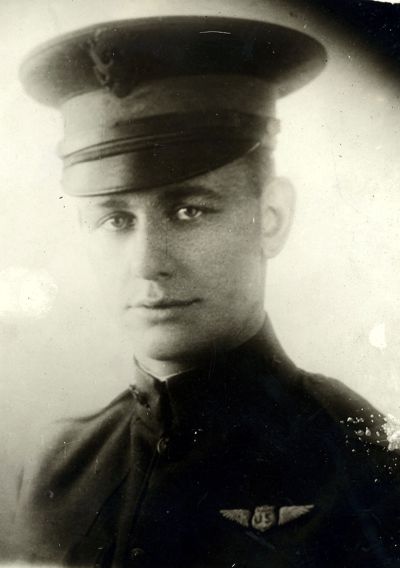
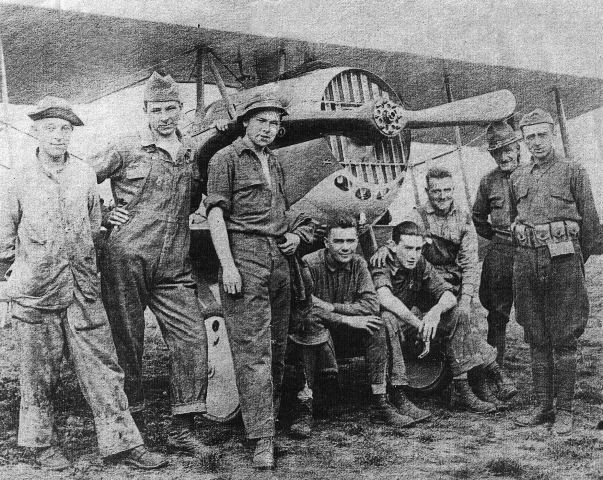
John H. Obermeyer, second from left
Lafayette, Indiana
Private
Air Service Motor Mechanic
Photo Analysis Lab
Interior view of the Laboratory Office and Negative File of the
U.S. Army Aerial Photographic Laboratory (undated) (Ed note: WW1 or WW2?) US Signal Corps photo
Troop movements, maps, charts, arterial placements, geographic advantages or disadvantages, could be analyzed for the maximum efficiency of the Allies resources.
.


View of soldiers of Company A, 306th Signal Battalion, 8AIR1st Division, U.S. Army, signaling to aeroplanes, using a radio set and operating at Maneuver, France, on September 7, 1918.
US Signal Corps Photo
In May 1918 a section of Historical records was formed. Col Earnest L Jones was put in charge. Col Jones was a Curtiss Pusher pilot, had published a magazine titled "Aeronautics" and served as an intelligence officer in the Signal Corps Aeronautics division prior to the war. He had served in France organizing what evolved into the information section of the Air Service. He was responsible for the collection, distribution, and preservation of technical and military data and now was appointed historian.
All records of the Air Service were collected, orders, bulletins, documents statistics, and memoranda. Record accumulation was expanded to included activities in Europe. Col Jones wanted accounts of air battles, deeds, and "the human story" of the men who participated. "Every effort should be made to present the facts of dramatic, comic or tragic interest tales of obstacles overcome, of discouraging conditions, of problems of personnel, equipment, supplies, transportation or maintenance, or tests and experiments that may have historical value."
US Air Service in WW1, Vol 1 The Final Report and A Tactical History of the Air Service, AEF
US Government Printing Office, 1921
In May 1918 a section of Historical records was formed. Col Earnest L Jones was put in charge. Col Jones was a Curtiss Pusher pilot, had published a magazine titled "Aeronautics" and served as an intelligence officer in the Signal Corps Aeronautics division prior to the war. He had served in France organizing what evolved into the information section of the Air Service. He was responsible for the collection, distribution, and preservation of technical and military data and now was appointed historian.
All records of the Air Service were collected, orders, bulletins, documents statistics, and memoranda. Record accumulation was expanded to included activities in Europe. Col Jones wanted accounts of air battles, deeds, and "the human story" of the men who participated. "Every effort should be made to present the facts of dramatic, comic or tragic interest tales of obstacles overcome, of discouraging conditions, of problems of personnel, equipment, supplies, transportation or maintenance, or tests and experiments that may have historical value."
US Air Service in WW1, Vol 1 The Final Report and A Tactical History of the Air Service, AEF
US Government Printing Office, 1921
Bombing German bases in Belgium from "The Nations at War"
The Lafayette Escadrille
American pilots, restless with US neutrality, volunteered to serve with the British and French forces.
The romanticized elite flying squadron, The Lafayette Escadrille was organized with US volunteers. They scored 39 victories in fighting the Germans but nearly a third of the unit died in the effort. Germans controlled the air, holding both the world endurance and distance records. The Fokker Eindecker, with an 80 HP engine was capable of a top speed of 82 MPH. The plane was equipped with a synchronized machine gun and Allied pilots described their own planes as “Fokker Fodder”.
The Allies countered with the DeHavilland.
The DH2 was capable of 90 MPH and carried a Lewis machine gun.
For further information on the Lafayette Escadrille see: https://www.neam.org/lafayette-escadrille/americansinfas.html
WW1 Aeroplanes
Photo from Wikimedia.org:
The Handley Page
"The Bloody Paralyser" was the largest aeroplane built in England having a wingspan of 126 feet, two engines, six machine guns, and the ability to carry two giant or thirty smaller bombs and a range sufficient to reach Berlin. They arrived late in the war effort and only 35 were constructed before the Armistice was declared. The wings folded for storage
For further information on the Handley Page, Long-range heavy bomber biplane see:
http://www.centennialofflight.gov/essay/Aerospace/Handley-page/Aero51.htm
Seaplane:
Port Washington, a plane at Wanamaker Station National Archives
Photo, courtesy of Indiana War Memorial Archives
For further information on the use of seaplanes "flying boats" in WW1 see:
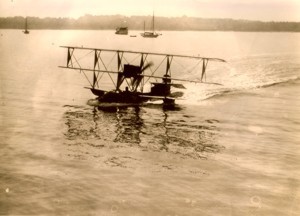
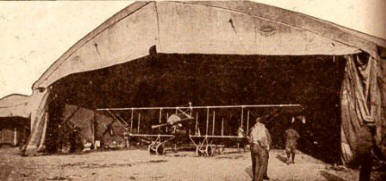
Aero Station on the Front
A canvas hangar for protection of planes on the actual fighting front.
Freedom’s Triumph Photo courtesy of Indiana War Memorial Archives
91st Aero Squadorn:
Captain E. R. Cook and Lt. T. M. Jervey (Only flying Ordinance officer at the front) showing insignia of the 91st Aero Squadron. Lt. Jervey has shot down 3 Germans and Captain Cook, 5, Varincourt, Meuse, France.
Photo courtesy of Indiana War Memorial Archives
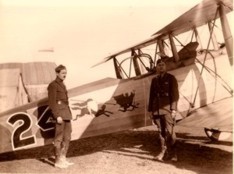
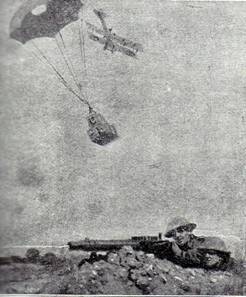
Ammunition drop
Depiction of an airplane drop of ammunition to machine gunners on the front lines.
Freedom’s Triumph, Photo courtesy of Indiana War Memorial Archives
"Poor weather restricted day bombing at St. Mihiel with low clouds and high winds. Clear nights enabled the British air force in cooperation with the American forces to attack railway lines. They were joined by the French and one Italian squadron to attack command centers near the front lines. The intelligence gathered from reconnaissance flights proved invaluable to the Allies."
US Air Service in World War 1, 1921
Department of Defense
https://media.defense.gov/2010/Oct/13/2001329759/-1/-1/0/AFD-101013-008.pdf
American "Photographing" Plane
American aviators had completed photographing the battlefronts and German cities by the time the armistice was signed.
Freedom’s Triumph Photo courtesy of Indiana War Memorial Archives
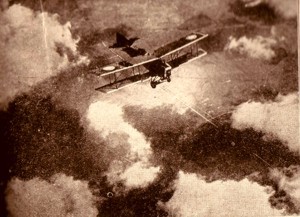
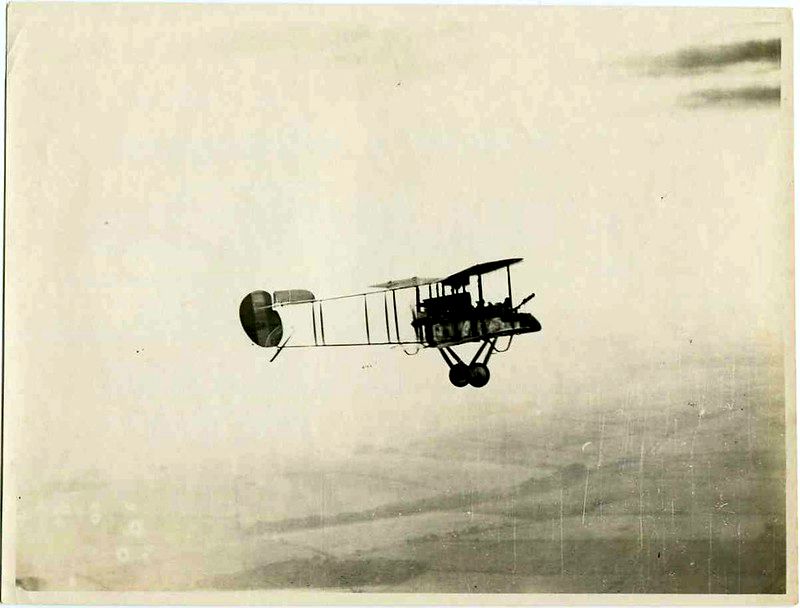
Aerial photograph, taken from an American airplane, of another American Airco DH.2 biplane flying over the Aerodrome near Toul, France, during World War I (circa 1918)
Photograph collected by Henry L. Graves.
US Army Signal Corps photo
Aerial photograph, taken from an American airplane, of a French Air Service Breguet biplane returning from a bombing mission over German lines in Europe during World War I (circa 1918)
Photograph collected by Henry L. Graves.
US Army Signal Corps photo
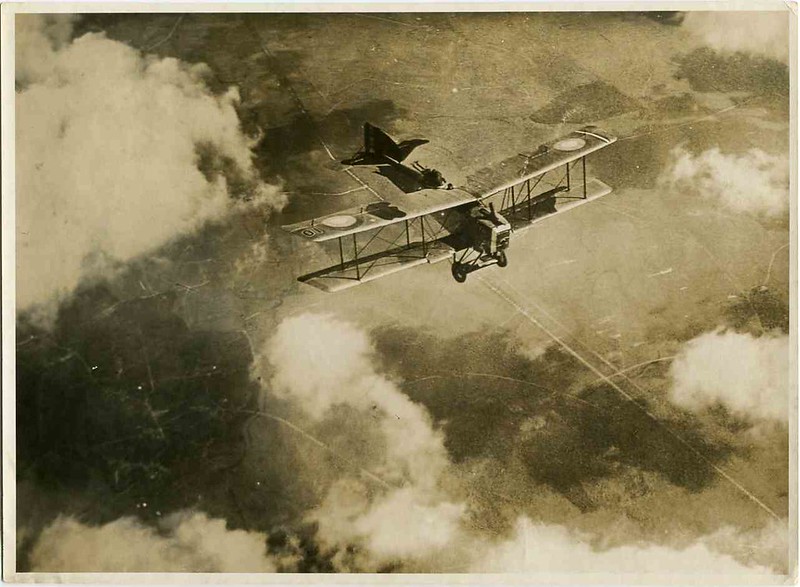
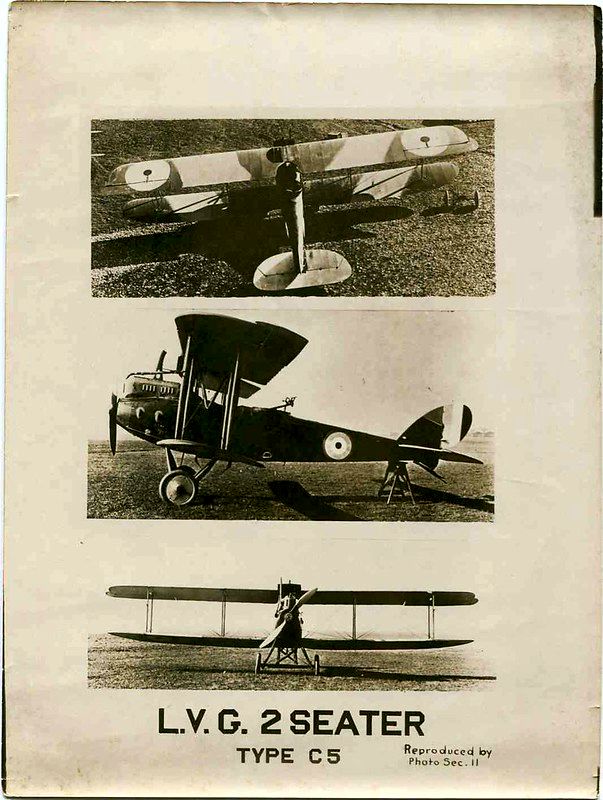
Contact print from a negative of a German L.V.G. 2 seater biplane, Type C5,
Allied Air Forces enemy aircraft photographic recognition chart (undated)
Photograph by: 11th Photo Section, U.S. Army.
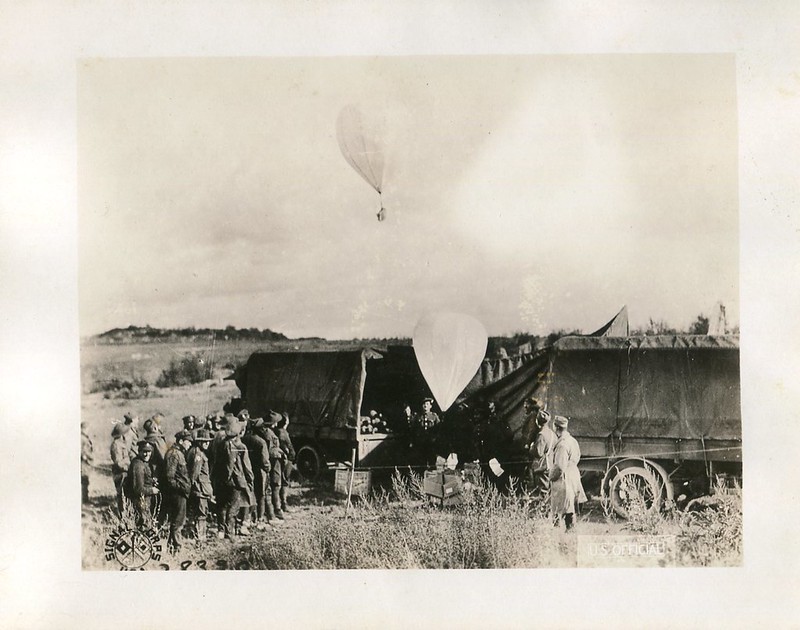
View of British soldiers, standing around covered trucks, sending American military propaganda to the German soldiers by means of small balloons in Templeaux-la-Fosse, Somme, France, on October 10, 1918. The British conducting this operation were operating with the American 27th and 30th Divisions (October 10, 1918)
Photograph by: U.S. Army Signal Corps, #28390.
![View of an American Army Air Service biplane, with plane number B-2762, crashed into the side of an airplane hangar in France during World War I (circa 1918) [Photograph taken or collected by Henry L. Graves]. Air Crash bldg](https://wwvets.org/wp-content/uploads/2020/08/Air-Crash-bldg.jpg)
View of an American Army Air Service biplane, with plane number B-2762, crashed into the side of an airplane hangar in France during World War I (circa 1918)
Photograph taken or collected by Henry L. Graves.
US Army Signal Corps archive
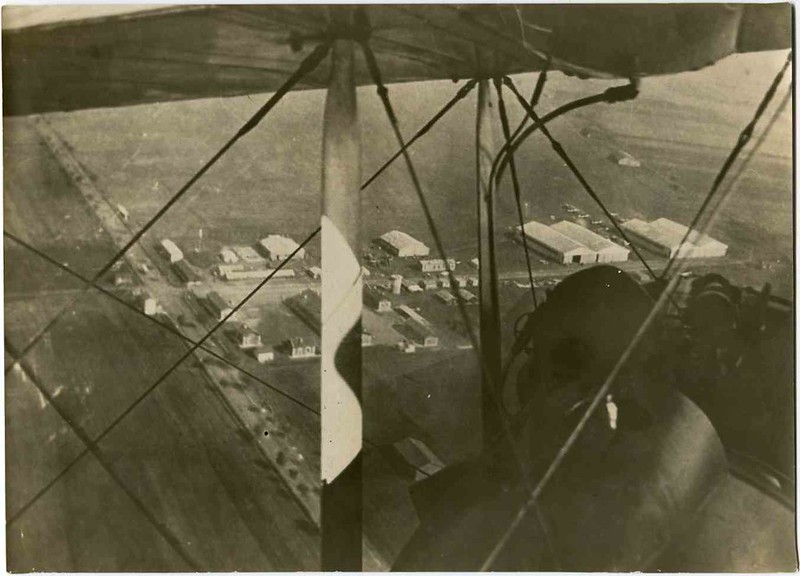
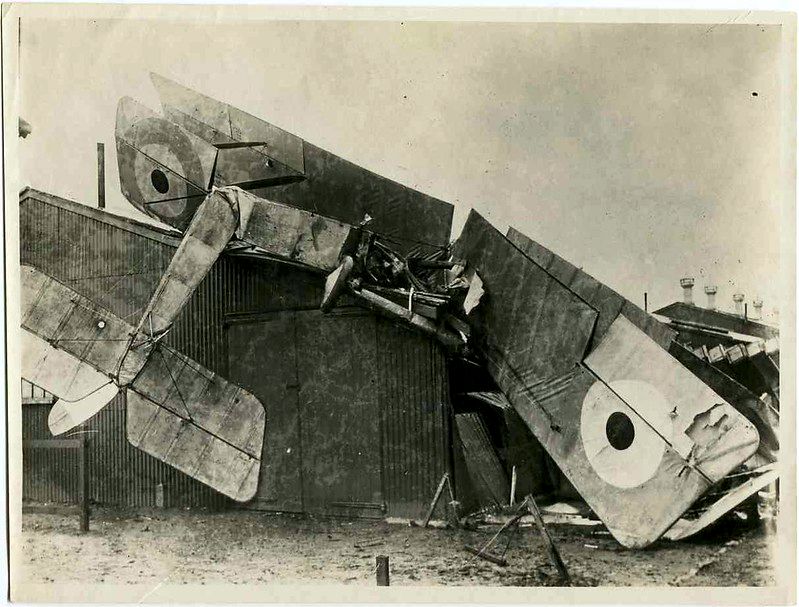
View of an American Army Air Service biplane crashed on the side of a roof of an airplane hangar in France during World War I (circa 1918)
Photograph taken or collected by Henry L. Graves.
US Army Signal Corps archives
Aerial view of the facilities of the 278th Aero Squadron, U.S. Second Army Air Service, at the Gengault Aerodrome in Toul, France. Photograph taken over the shoulder of pilot 1st Lt. Henry L. Graves (silhouetted figure at right) by his aerial observer from his airplane on November 21, 1918 (November 21, 1918)
Photograph collected by Henry L. Graves.
US Signal Corps photo
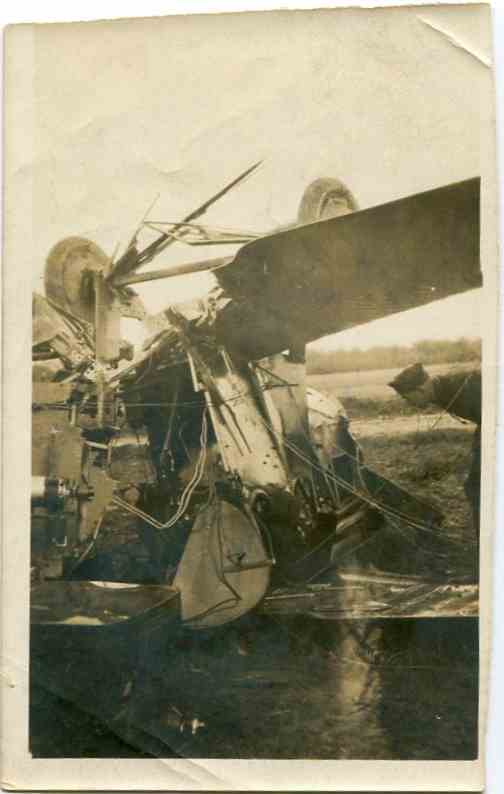
View of a crashed Dayton-Wright DH-4 observation aircraft of the 278th Aero Squadron in Toul, France, flown by 1st Lt. Jerry T. Illich of Los Angeles, California, and a man named James. The plane crash cost the U.S. government $10,000. Pilot Jerry Illich is seen at right leaning over looking at the crash he survived (circa 1918)
Photograph taken or collected by Henry L. Graves.
US Army Signal Corps photo
Group photograph of an unidentified U.S. Army Air Service unit, posing in front of four American airplanes on an airfield somewhere in France during World War I in the winter. Snow is seen on the ground [believed to be at the American airfield at Toul, France] (undated) Photograph from the collection of Henry L. Graves.
US Signal Corps Photo
Observation Balloons

The R34 British Airship was the first to make the East-West crossing of the Atlantic. Built by William Breardmore & Co it was not completed until late 1917 and never saw service in the war.
Three Ballon companies participated in the Chateau-Thierry counteroffensive. They accompanied the 1st & 2nd Divisions as part of the French Xth Army and proved an invaluable asset to adjusting artillery fire and reporting advancing enemy infantry.
Eight balloons were shot down and one damaged by shell fire. Twelve balloon pilots were forced to parachute down.
US Air Service in the World War 1921
The Airship’s Conquest of the Atlantic
"The monster’s size, the immensity of R-34, is shown by seeing the comparison of this aerial Leviathan with Trafalgar Square."
Freedom’s Triumph, Courtesy of Indiana War Memorial Archives
US Obswervatiuon balloons made 1,642 Combat ascensions. They were used for artillery site observation and were positioned behind the front lines. Their altitude provided more accurate targeting for artillery. They provided an important function and were protected by anti-aircraft guns, machine gunners, and fighter aircraft.
The WW1 observation balloon crews were the first to use parachutes
The Zeppelins cruising speed was often as fast as the pursuing plane, and they were fully armed with machine guns to greet any aeroplanes that came near. They would be launched at dusk and arrive over England in the dead of night to drop bombs on the easily targeted lit cities but were notoriously inaccurate.
Later planes with more powerful engines were armed with incendiary, phosphorus laced bullets, designed specifically for a Zeppelin attack. British pilots eventually evened the score, and it was said a Zeppelin burning would light the night sky.
Balloon Parachute Jumper
CN3125 Group 64, National Archive Photo Courtesy of Indiana War Memorial
Observers were sent up in wicker baskets, with cameras, sketchpads and a wireless set, to identify enemy troop movements. Usually the two man crew could see as far as forty miles and direct artillery fire, identify troop concentrations and site enemy planes. They were irresistible targets for the opposing forces. Highly protected, with AA guns and long range machine guns, and floating at high altitudes of over 4,000 feet, it was difficult for the enemy plane to take a balloon down and make a clean escape. Ordinary rifle fire would pass harmlessly through the hydrogen gas bag causing damage but not immediate destruction. British pilots would never attack a balloon under 1,000 feet as the Machine Gun fire from the ground forces was deemed too dangerous. The balloons were tethered and would be pulled down quickly with a motorized winch once a fighter plane was spotted. The Germans developed a flat nosed .45 caliber, incendiary, machine gun bullet, they dubbed the Buckingham Bullet, specifically to take down Zeppelins over England. The risks to the balloonist were enormous as they hung under huge hydrogen filled targets. They were the only group routinely fitted with parachutes but the early parachutes had a high failure rate. Balloonist would only jump in dire emergencies.
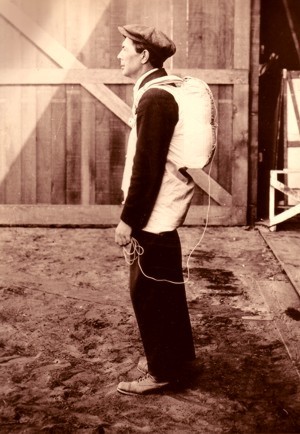
Returning from a U-Boat scouting party. Aerial naval observer coming down from a "Blimp" type balloon after a scouting tour somewhere on the Atlantic Coast.
Central News Photo Service.
US Army Signal Corps
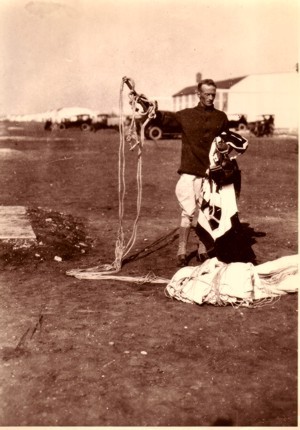
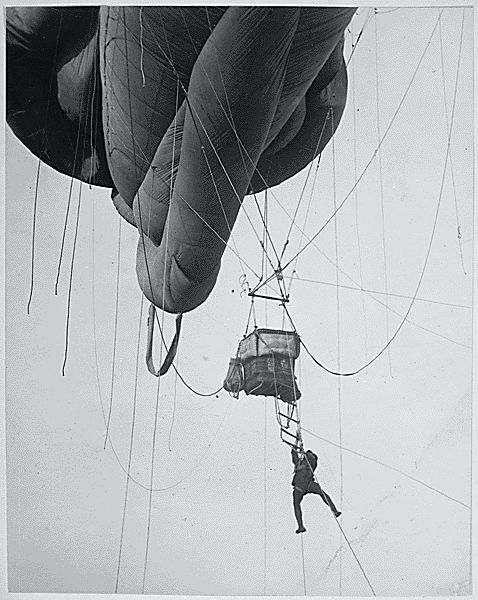
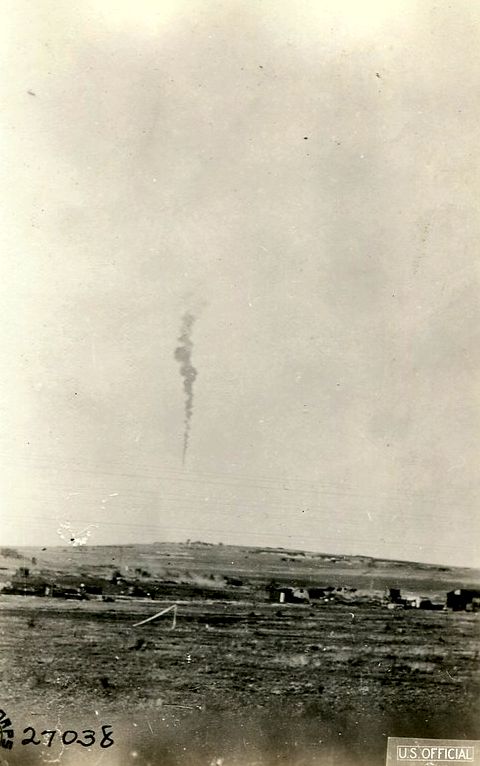
View of a German observation balloon bursting into flames, with a German observer jumping out of the balloon with a parachute, after the balloon was hit by guns from American airplanes somewhere in France during World War I (undated)
Photograph collected by Henry L. Graves
US Signal Corps archives
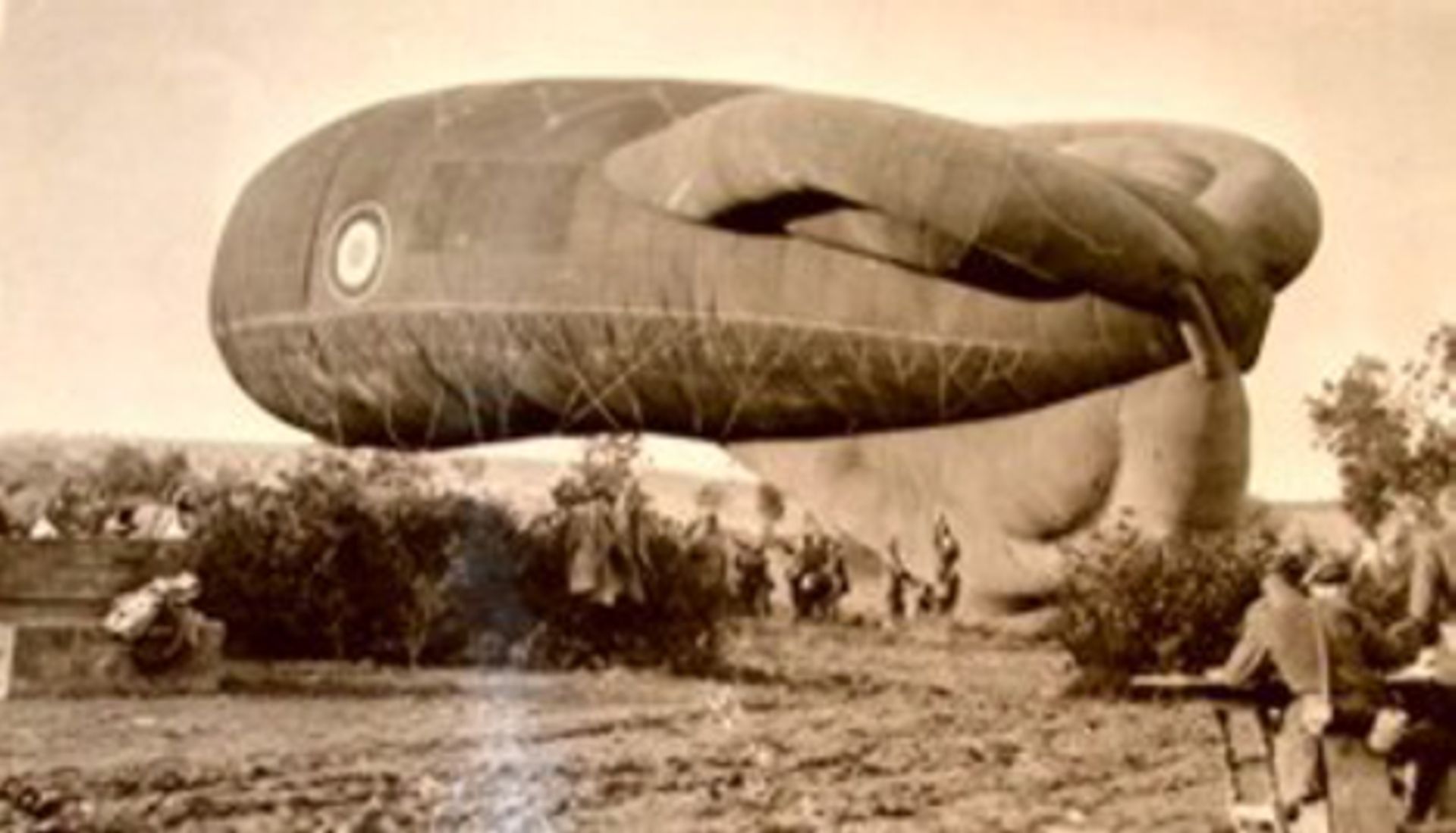
Caquot style Barrage Balloon launch.
They were tethered above areas of bombing interest in the hope that enemy planes would be forced to fly at higher altitudes, decreasing their effectiveness.
National Archives Photo Courtesy of Indiana War Memorial Archives
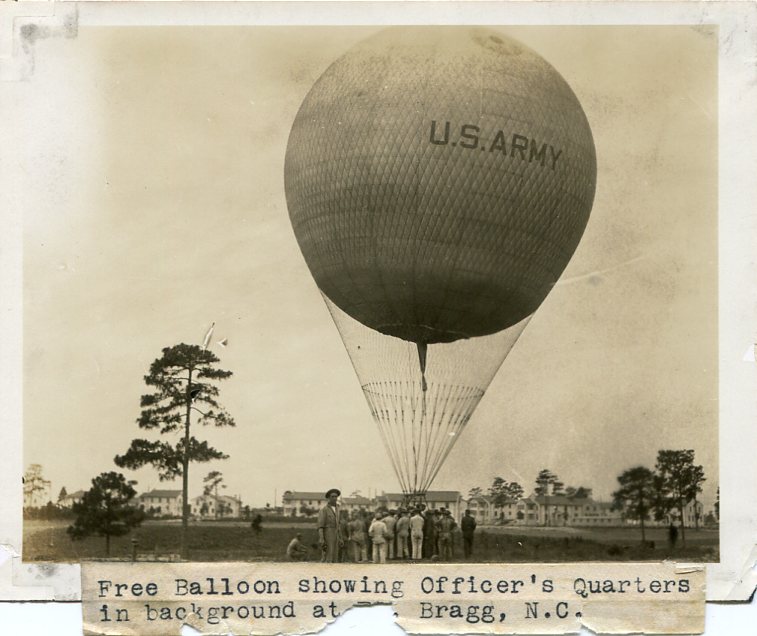
Real-photo postcard of a photograph of a captive aerial balloon and rigging crew, with the balloon in flight over Fort Bragg, N.C., during the 1930s circa 1930s
Postcard by: Allan Turlington’s Photo Shop, Fayetteville, N.C.
US Signal Corps Archives
↓
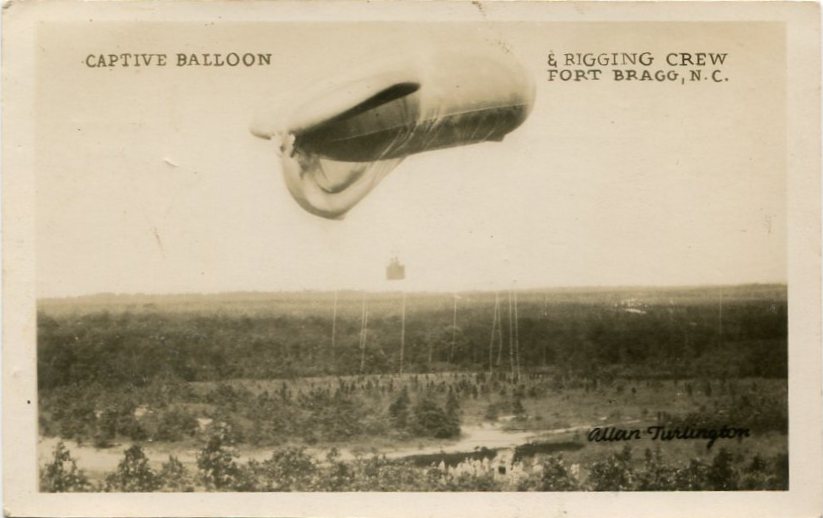
Photograph of an inflated U.S. Army free balloon on a lawn in the middle of Fort Bragg, N.C., during the 1920s. A crowd of Soldiers and men in overalls are pictured around the balloon’s basket on the ground. The Officers’ Quarters is pictured in the background [circa 1920s].
US Signal Corps Photo
![AIRPhotograph of a U.S. Army dirigible balloon hangar at Pope Field, N.C., around the 1920s. A number of automobiles are pictured parked outside of the hangar’s door [circa 1920s]. AIRPhotograph of a U.S. Army dirigible balloon hangar at Pope Field, N.C., around the 1920s. A number of automobiles are pictured parked outside of the hangar’s door [circa 1920s].](https://wwvets.org/wp-content/uploads/2020/08/AIRPhotograph-of-a-U.S.-Army-dirigible-balloon-hangar-at-Pope-Field-N.C.-around-the-1920s.-A-number-of-automobiles-are-pictured-parked-outside-of-the-hangar’s-door-circa-1920s..jpg)
Photograph of a U.S. Army dirigible balloon hangar at Pope Field, N.C., around the 1920s. A number of automobiles are pictured parked outside of the hangar’s door [circa 1920s].
US Signal Corps photo
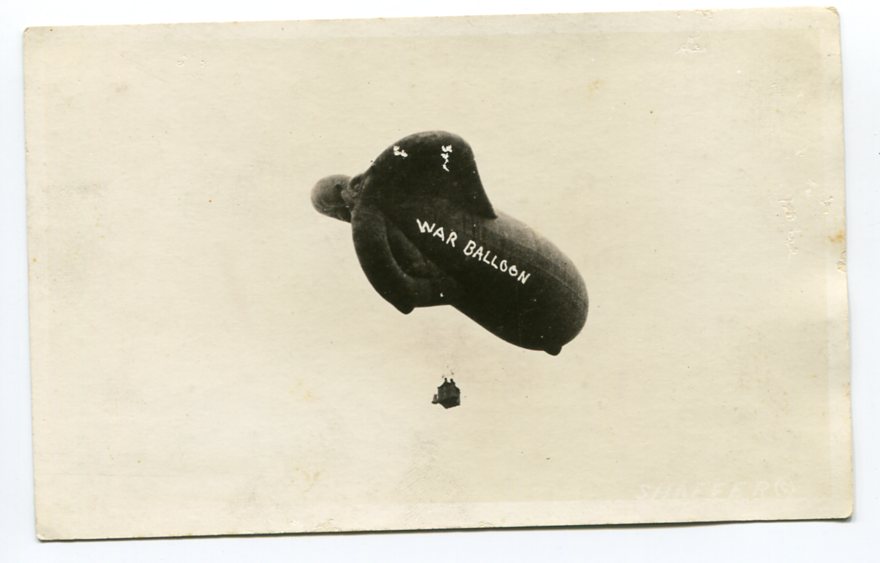
Real-photo postcard of a military balloon flying in the air, carrying a basket with several men under the balloon. A group of unidentified soldiers is seen holding the balloon ropes (Undated)
Photograph by: Shaffer.
US Army Signal Corps photo
American Paraboloid
Used sound as a primary finder for locating airplanes at night.
Freedom’s Triumph, Photo Courtesy of Indiana War Memorial Archives
See http://en.wikipedia.org/wiki/Acoustic_mirror for further information.
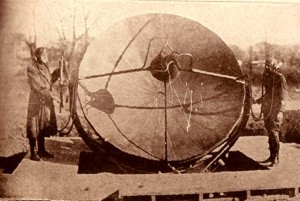
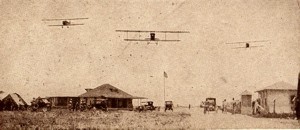
"Observing Planes Making a tremendous din as they hover over headquarters at the US Marine Aviation Field"
Freedom’s Triumph, Courtesy of Indiana War Memorial Archives
Aerial warfare evolved. It was deemed an unfair advantage to drop bombs or projectiles from above and actually prohibited at the 1899 Hague International Peace Conference at the Hague.
“The Undersigned, Plenipotentiaries of the Powers represented at the International Peace Conference at The Hague, duly authorized to that effect by their Governments, inspired by the sentiments which found expression in the Declaration of St. Petersburg of the 29th November (11th December), 1868,
Declare that: The Contracting Powers agree to prohibit, for a term of five years, the launching of projectiles and explosives from balloons, or by other new methods of similar nature.
The present Declaration is only binding on the Contracting Powers in case of war between two or more of them.
It shall cease to be binding from the time when, in a war between the Contracting Powers, one of the belligerents is joined by a non-Contracting Power.”
Love Field: Opened October 19, 1917 and named for early Military Aviator,1st Lt, Moss Lee Love, 11th Cavalry, who died in an airplane crash in San Diego, CA., in 1913.
The Associated Press reported that Texas cattle would eat the linen wings of an unguarded Curtis JN-4D (Jenny) airplane. Some 6,000 men were trained on the Jenny before the war was over.
Love Field, Aviation Training Center, Dallas, Texas. National Archives Photo, courtesy of Indiana War Memorial Archives
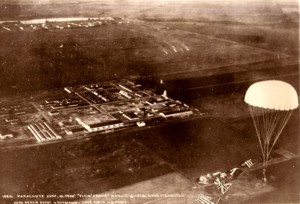
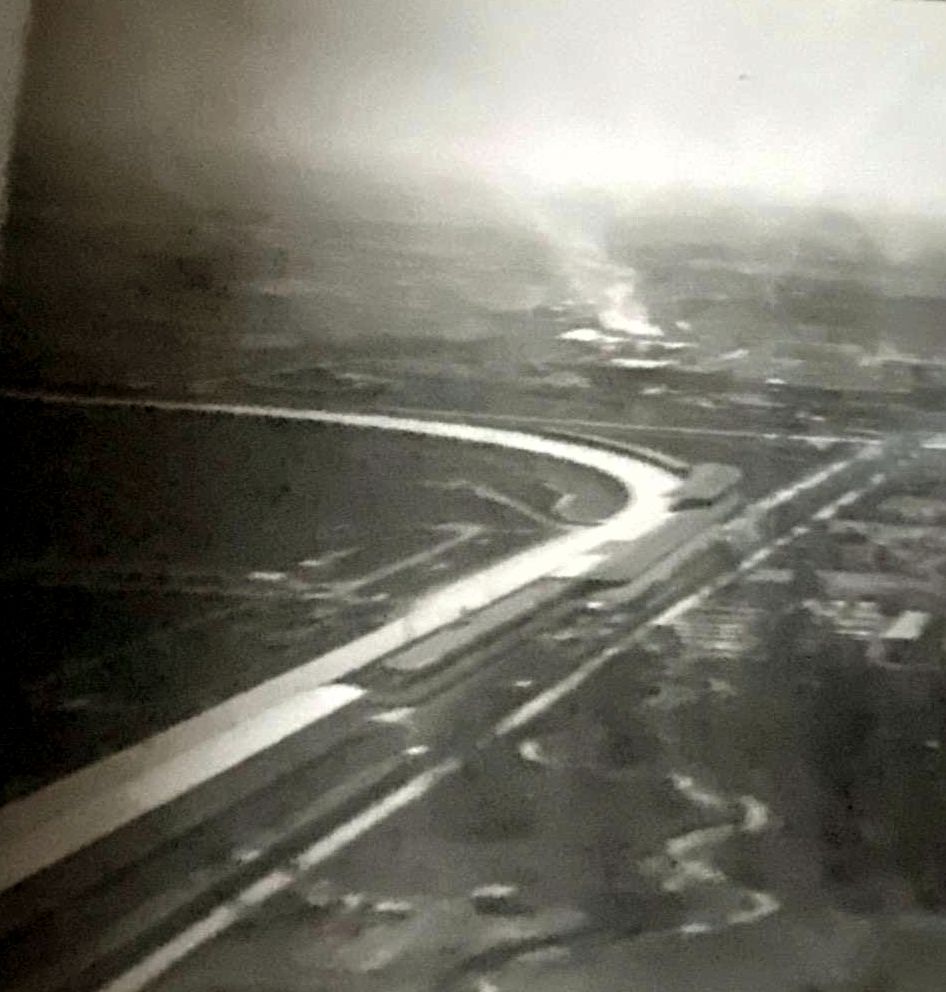
Indianapolis 500 landing strip during WW1
Photo courtesy of Stan & Sarah Sievers
The Indianapolis 500
During the war, the race was canceled. James Allison, of Allison Engineering Co. recruited the talented engineers and mechanics that could be better utilized by the government. The track became a repair and landing site for WW1 aircraft.
The aviation depot repaired damaged aircraft for overseas combat or training mishaps. The planes were stripped down, rebuilt, and tested. They repaired over 300 planes and parts were put back in service.
The 809th, 811th and 821st squadrons, consisting of almost 500 men were stationed at the depot located just South of the Speedway.
Nordyke & Marmon, engineering and automobile manufacturers located in Indianapolis, were among those contracted with the US government to manufacture parts for the Liberty V-12 aircraft engine.
The Indy 500 race resumed racing automobiles in 1920 when the repair depot was abandoned.
Stories from the Veterans themselves: |
George Rittenhouse Nixon
Marion County, Indiana
Distinguished Service Cross:
"Near Domevre-en-Haye, France, August 28, 1918, Lieutenant Nixon was locating active enemy batteries from his balloon and was attacked several times by enemy planes, but refused to descend until one had set fire to the balloon. On September 28, while he was on a recon mission, five enemy planes fired at him. He remained in the basket until the balloon was a mass of flames, and one of the enemy aviators followed him to the ground, firing at him. Despite his narrow escape he immediately re-ascended."
Reuben S. Johnson, Corporal,
Air Service,
Tippecanoe County, Indiana
"Entered service Aug 11, 1917, and stationed at Jefferson Barracks, Mo. Sent to Kelly Field, Tex.; transferred to Mineola, N. Y., and sailed for Liverpool, Eng., Nov. 4, 1917. Started training as an air mechanic with the Royal Flying Corps and transferred to the suburbs of London, Dec. 9, 1917. Transferred to American rest camp at Winchester, Jan. 8, 1918. Sent to the suburb of Birmingham, Jan. 12, 1918, and took up training in night bombing attached to the 38th squadron, Royal Flying Corps, under command of Major Wigeram. Left for France May 3, 1918, and was stationed with the British in a suburb of Dunkirk. Worked in connection with the Navy bombing in Ostend, Bruges, Zebrug, and a munitions dump in Belgium. Remained in active service in France until Aug. 12, 1918, when he was sent back to England, Ford Junction, Sussex, to organize an American squadron of Handley Pages’ bombing planes and was ready to return to France when the armistice was signed. Sailed for the United States Nov. 23, 1918, on the British ship “Minnehaha.” Landed in New York, Dec. 4, 1918, and received his honorable discharge from Camp Sherman, Ohio, Dec 20, 1918. Born at Clarks Hill, Ind., Oct. 11, 1891, son of Closs A. and Emiline Edith Johnson. Attended Clarks Hill schools. Home is Clarks Hill, Indiana."
Kenneth Henri Holden
LaPorte County, Indiana
Distinguished Service Cross:
"While on an Infantry contact mission he and his observer were attacked by four enemy planes and driven back, but realizing the importance of their mission, deliberately returned and attacked the four planes, sending one to the earth and driving the others away. Unmindful of the damaged condition of their plane and of their own danger, they flew for an hour within one hundred meters of the ground, through a continuous heavy machine-gun fire, until they had accurately located our front-line position."
Jesse Nelson Tippy,
Grant County, Indiana
Chauffeur, Air Service, Squadron B, Kelly Field, Texas
Return to civil life: “Same old job, Parcel Post Carrier”
John Wiley Jordan
Marion County, Indiana
Distinguished Service Cross:
"Under the protection of three pursuit planes, each carrying a pilot and observer, Lieutenants Bernsheimer and Jordan, in charge of a photo plane, carried out successfully a hazardous photographic mission over the enemy's lines to the River Aisne. The four American ships were attacked by twelve enemy battle planes. Lieutenant Jordan, by accurate operation of his machine gun, in spite of wounds in his shoulder and leg, aided materially in the victory which came to the American ship and returned safely with thirty-six valuable photographs."
Seth Llewellyn Baker
Electrician
U.S. Navy,
Marion County, Indiana
Foreign service: landed Brest, France, May 23, 1918. Reached US Naval air station, Pauillac, France, May 27. Transferred to Moutchie-Lacanan, Gerande, Air Station for instruction in Observer School. Transferred to Northern Bombing Group Squadron #1, Field A, St Inglevert, France, August 22, 1918. Did night bombing over Belgian with Squadron 214, RAF. Moved with part of Squadron to the Aerodrome at Marie-Aalter, Belgium, November 6, 1918.
“The observers (all enlisted men) stationed with the Northern Bombing Group Squadron #1, Field A, St. Inglevert, France were assigned to the British Air Squadrons located nearby, (such as 214 and 218 RAF Squadrons) for actual work at bombing over the line as the American planes, (big Caproni’s) were of little actual worth for bombing purposes. The planes used for night bombing were Handley-Pages carrying three men, pilot, observer, and gunner. Twin Lewis machine guns in the observer’s cockpit, foreword, and three guns aft. These planes carry 2,000 pounds of bombs.”
Lawrence Joseph Nickol, AEF,
Ripley County, Indiana
“The repair station at Speedway, Indianapolis was the largest in the United States. All the Flying Fields in the Eastern half of the US sent their planes here for repair.”
Bernard L. Schultz,
1st Lt, Flight Commander,
Air Service,
Tippecanoe County, Indiana
"Entered service Aug. 20, 1917, being the first man in Tippecanoe County to enlist in the air service. Stationed at Columbus, O., where he received his training in groundwork. Was selected for overseas training as a reward of merit, sailed for France, Oct. 26, 1917. First trained in flying at Tours, France, and was appointed instructor. His plane fell on July 13, 1918, due to a defective motor. Received several cuts about his head and arms and the ligaments of his right hand were strained. Finished training at Issoudun and St. Jean de Monts. Qualified as a chase pilot. Assigned to 638th Squadron, 5th Pursuit Group, and was made the flight commander.
Landed in the United States in February 1919. Born at Shelbyville, Ind., Dec. 4, 1893, son of Moses and Fannie L. Schultz. Attended Northwestern University. Home is Lafayette. Ind."
Flew the Curtis J-N 4 aircraft after repairing the engines to prove they were repaired correctly.
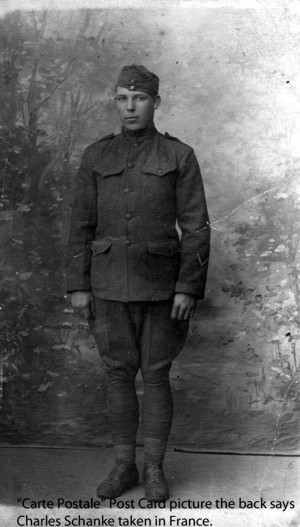
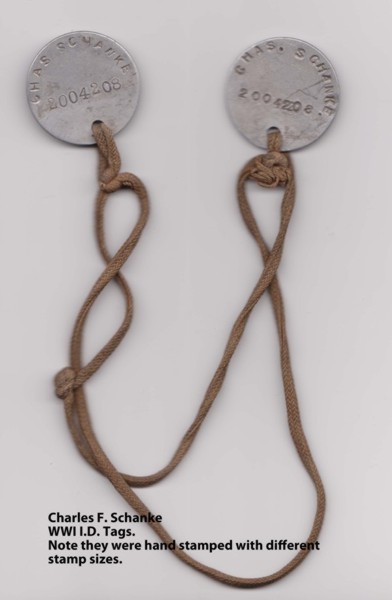
Photos of Corp. Schanke in uniform, his Regimental Patch, Air Service Mechanics Patch, and dog tags courtesy of his family.
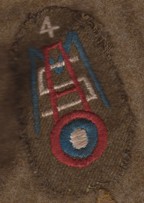
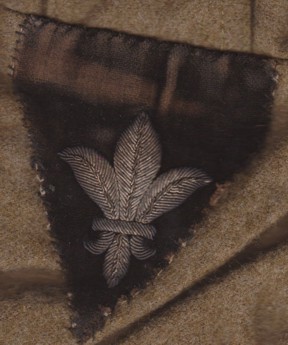
Henry Earl Eads, Naval Aviator, Ripley County, Indiana
"Embarked from Philadelphia, PA., on October 16, 1917, on the USS DeKalb, for the Naval Aviation Force. Arrived at St. Nazaire, France, October 28, 1917.
Service: Night bombing raids from Dunkirk, December 26, 1917, through August 10, 1918. In August 1918 he was assigned to Zeebrugge, Belgium, preparing air aviation base that was completed on November 11, 1918. Dunkirk was under shell fire during the entire war from the air, land, and sea. Airplanes, long-range guns, and every sort of bombarding weapon were used from time to time. The bomb raiding parties went out every night unless it rained.
There were only 125 men in this special Naval Air Force, which was never increased but was kept up by replacement men. Only fourteen men were lost from the unit. English planes were used. The camp was built after the arrival of the force at Dunkirk in 1917. At one time a Lieutenant went up in the plane in Ead’s place, at the request of the Lieutenant. The plane fell inside of German lines and the Lt. and the aviator was held prisoner in Germany until after the Armistice.
Wounded June 15, 1918. Fell with his air-plane about 300 ft., injuring (sprain and bruised) knee."
Sergeant James Arthur Miller, Air Service, Motor Mechanic, Marion County, Indiana
Received a complimentary letter from Marshall Foch for rescuing a burning plane and occupant from enemy fire.
Battles: St. Mihiel Salient, Argonne, and several air raids out of Paris.
Shrapnel wound in the left leg during advancement in St. Mihiel Drive. Received medical aid at Gievres. Discharged July 17, 1919. “I would not take a million dollars for my experience, but wouldn’t give a dime to go through it again.”
Carroll D. Eaglin, 103rd Aero Pursuit Squadron, Lafayette Escadrille, Jefferson County, Indiana
“The other day a little French soldier wandered into our camp and told us what happened to his family. He is 15 years old, very small, and has been in the trenches for 30 months. The Huns killed his mother and a little five-year-old brother, and he was with his father, who was a lieutenant until he was killed. He went “over the top” with his dad, and was wounded at the same time his dad was killed. We are going to keep him now and have him dressing in an American uniform. He sure is living the life of Riley. All he can say in English is ‘under your bunk,’ and ‘good morning.’ ‘Under the bunk’ is a saying the boys here use when there are German airplanes about, ready to drop shells on us. This is done mostly at night and sure makes you a little nervous.”
Ronald Gordon Ratcliffe, Sergeant, 91st Aero Squadron, Knox County, Indiana
“Camp life in the early part of the war was very hard. The first three months were, on account of not having necessities. Suffered many hardships. “The 91st Aero Squadron in a summary of work performed by them, from May 29th to November 11th, 1918.
-
Destruction of enemy planes (confirmed) 21
- Number of Combats 139
- Successful Negatives 3,700
- Number Taken As Prisoners (German) 9
- Number Killed 13
- Number Wounded 13
- On December 2, 1919, went into Treves on the Moselle.
- On January 15, 1919, went to Coblenz and was there until May 1919, with the Army of Occupation.”
- Battles: Chateau-Thierry, Marne, Argonne
Ralph Romeo Hyatt, Corporal, Navy, Ripley County, Indiana
“Did telegraph and electrical work. A telephone was installed in the basket of each balloon. These were connected with the battery commanders of each battery of artillery. The balloonist did observation work, reporting the positions of enemy artillery, troop maneuvers behind the lines, any unusual movements, the concentration of troops, and so on and also adjusted artillery fire at the targets.
“French-made balloons were used when first reaching France. Later American balloons, made mostly by the Goodyear Rubber Co., at Akron, Ohio were used. The types used were sausage balloons. Two or three men went up in each basket, two being the rule. The balloons were shaped like elephant bodies, 35 or 36 meters long, about one third as wide. The bags were made of silk and rubber. It required 200 cylinders of gas containing 192 cu. ft. to fill the bag of each balloon at a cost of $200. Hydrogen gas was used. The baskets, 4.5 ft. sq. by 5 ft. deep, made of bamboo, tough and light, suspended from the rigging of the balloons by ordinary hemp or cotton ropes.
“There were 23 balloon companies in the American Front in the last three months of fighting, all being used at St. Mihiel. Captive balloons were held by cables attached to motor-driven winches, which were moved by motor trucks. 42 balloons were destroyed by German shellfire and from air-planes.”
George Edgar Goldthwaite, 24th Aero Squadron, Distinguished Service Cross, Grant County, Indiana
1st Lt, Pilot and flight commander, 24th Aero Squadron, 1st Army Observation Group
Participated in operations at Toul Front and St. Mihiel offensive, August through September 1918; Argonne-Meuse offensive September through November 1918.
Received the Distinguished Service Cross for observation work over German lines near Bantheville (NW of Verdun), locating a concentration for a counter-attack, October 15, 1918. “Lt. Goldthwaite and his observer flew generally at an altitude of 400 meters, at times as low as 50 meters, 5 km into the enemy's lines. Antiaircraft guns riddled his plane with bullets, piercing the gasoline tank and drenching both pilot and observer. He continued on until the enemy's concentration was located, and military information of great value was secure. The bravery of Lt. Goldthwaite saved many lives of American Soldiers and brought large losses to the enemy.”
The formal award made by Major General Liggett at Souilly, France, 1st Army Hdqtrs., December 15, 1918.
Received Citation for photographic mission performed November 5th, 1918 when his plane, flying alone, was attacked by five German planes. Observer Capt. Spessard L. Holland, of Bartow, Fla., shot down one of the enemy planes and drove off the rest. (place) Foret de Spincourt.
James Walters Sandlin, Cpl., 148th Aero Squadron, Vanderburg County, Indiana
My work in France was done with 148th Aero Squadron, US Air Service which had several Indiana boys as members.
The 148th was one of two air units who saw all of their active service as American Squadrons attached to the British, the other was the 17th. Both outfits made excellent records for themselves in the United States. Major Newhall commanding the 148th, Major Eichert commanding the17th, and Lt. Col. Fowler commanding U.S. Air Forces with the British.
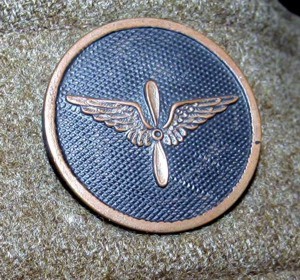
Aviator Collar Insignia
Indiana War Memorial archives
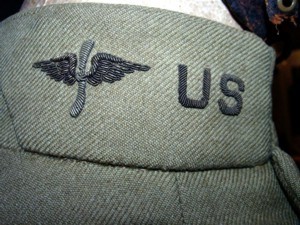
Embroidered Officers Collar Insignia on an impeccably custom made WW1 US officer's uniform. Uniform tailored in Paris.
Indiana War Memorial Archives
Charles T. Carll, 2nd Lt., Aviation, Marion County, Indiana
Conscripted into aviation in Washington DC, January 2, 1918. Joined American Field Service, May 26, 1917. Served six months in France with the French army until November 1918. Enlisted and passed examinations both in Paris and Washington for aviation. Called to Columbus Ohio, May 11, 1918, for ground school. Sent to Carruthers Field, August 20. On January 10, 1919, with but one half-hour more flying, fell 2,300 feet but only slightly injured. Commission 2nd Lt. March 3, 1919, discharged March 15, 1919.
Arthur Charles Stone, Naval Aviation, Pensacola, Florida, Vanderburg County, Indiana
Was the only Dirigible Pilot in the service from Vanderburg County.
George Washington Steele, Lt.-Commander, U.S. Navy, Grant County, Indiana
Aid to the English Vice-Admiral and the French Rear-Admiral in Washington
Assigned to Army Convoy Service, Commander USS Henderson
The Henderson made fourteen trips across, and on the fifteenth, the ship took fire at sea. After 24 hours of fighting it, troops were transferred to other vessels and the ship returned to port. Commended and personal letters by the Secretary of Navy and War for efficiency and organization onboard the USS Henderson.
Now Commander: airship, Los Angeles, Lakehurst, New Jersey. Was sent to Germany to superintend the finishing and transfer of the Giant Dirigible and brought it over in 1924.
Charles E. Cox Jr., Air Service, Combat Pilot, Marion County, Indiana
Sent overseas, October 1917. Receive training in Italy and Issodon, France. He was a combat pilot with the 1st Pursuit Group, 147th Aero Squadron at the signing of the armistice.
Glen Cecil Waples, 2nd Lt., Air Service Aeronautics, Tippecanoe County, Indiana
Entered service Sept. 22, 1917. Stationed at Camp Taylor, Ky., and appointed corporal. Later received the rank of sergeant, Co. C, 309th Field Signal Battalion, in December 1917. Transferred to Urbana, Ill., in March 1918, where he attended the ground school of Military Aeronautics. Sent to the aviation field in Texas, where he received his commission. Was there when the armistice was signed. Born at West Point, Ind., July 22, 1893, son of Jacob E. and Alice C. Waples. Graduate of Purdue University. Home is Clarks Hill, Ind.
Early in the war pilots dropped incendiaries, explosives, and propaganda. Actual bombing raids didn’t take place for the Germans unit late in 1914 and it wasn’t until 1917 the British DH4 bomber became a mainstay for reliable day bombing. They flew in tight formations of six to twelve, maintaining their positions while carrying two 230 lb. bombs (or four 112 lb.) hung from the lower wing.
Edward James, 2nd Lt. Aviation Corps, Marion County, Indiana
Unidentified newspaper clipping (Indiana State Library)
Edward James, son of Mr. Mrs. David J. James, 41 Whittier Place, has received a commission as a pilot and 2nd Lt. in the United States Aviation Corps. James was a student at Butler College last winter when he enlisted. He received his earlier training at the Ground School at Rantoul, Ill. James has a brother, Charles James, who is the Corporal in Battery E., 150th Field Artillery, AEF, and who has been wounded severely and gassed in action, but who is back on the firing line. Edward James has a member of the Delta Tau Delta fraternity and of the BBS club in Irvington.
Sterling Holt Keene, Sergeant, Signal Corps, Marion County, Indiana
1st motor mechanics, Richmond, South Carolina, later designated 1st Air Service Mechanics Regiment, was the1st Regiment of Motor Mechanics for Air Service work ever formed and was the1st Regiment of Motor Mechanics to land on foreign soil.
Byron Arthur Smith, Private, Air Service, Tippecanoe County, Indiana
Entered service Feb, 16,1918. Stationed at Columbus Barracks, O., Sent to recruiting lines at Kelly Field, Tex., and ten days after arrival, was placed in the first Omaha Detachment and transferred into the 14th Balloon Corps. After four months of training, he was sent to the port of embarkation at Morrison, Va., where he was transferred to 28th Balloon Corps. Was ill for a time and after his recovery was sent to Camp Lee Hall, Va. His company, with four other companies, built the U. S. Army Balloon School, at a branch of Camp Eustis, Va. On Christmas Day, 1918, was sent to Aberdeen Proving Grounds, Md., where he was assigned to special work of testing some new devices. Born at Logansport, Ind., May 16, 1899, son of Joseph William and Jane Smith. Graduate of Indianapolis high schools. Home is Lafayette, Ind.
Harrison Dale Miller, Sergeant Major, Marion County, Indiana
Sergeant Major of Aviation Examining Board, Indianapolis Indiana November 16, 1917, to March 10, 1918. Served at Scott Field, Belleville, Illinois; Dayton Wright Airplane factory, Dayton, Ohio, April 7, 1918, to May 22, 1918; Ellington Field, Houston Texas, May 25 to July 5, 1918; Mitchel Field, Garden City, Long Island, New York from July 5 to December 11, 1918. Sergeant Major and Mitchel Field Long Island, New York, from July 10 to December 11, 1918.
Was on duty requiring frequent and regular aerial flights per S. O. of Hdqtrs., 1st Provisional Reg. Was the only non-commissioned flier on the field. Participate in 354 hours of aerial flights with only one fall. Received honorary discharge per S. O. 300 HQ, Eastern department on December 11, 1918, from Mitchel Field, Garden City, Long Island, New York.
John Frank Gauck, Batesville, Ripley County, Indiana
“General Headquarters, in the organization, was a branch of the US Infantry, succeeded Headquarters Troops, Cavalry, brought over by Pershing in Fall of 1917. It was organized about March 1, 1918. It consisted of three Companies, A, B, & C. A fourth, D, went to Tours in the supply service, S. O. S., as it was called.
Companies A, B, & C, Headquarters Bn., were in the zone of advance, General Hdqtrs., Chaumont, France. This was inside the danger zone, D Co. at Tours, in supply service was in the safety zone.
Air-planes came over every night from the enemy lines during the last five months of the war. A big “ammunition dump” was a Choncery, six miles from Chaumont, the largest ammunition dump of the Allied Forces. This was the air-plane’s particular objective. They also scattered propaganda circulars, dodgers, cards, asking such questions as: ‘Why are the Americans fighting, you can’t win the war.’
Soldiers were buried as follows in the American Cemetery at Chaumont. Nine were put into one grave, each in wooden, box-shaped coffins. About 1,000 were buried there. Base Hospital No. 90 was at Chaumont, on the banks of the Marne. When buried on the battlefield, bodies were rolled into blankets and buried without coffins. The Administration Co. buried the dead and kept records. One remained on the body, one on the marker on the top of the grave. At Chaumont the names were put in big wine-bottles on slips of paper and sealed. Each grave had a cross with the name and so on…”
Albert E. Weaver, 1st Lt, Air Service, Tippecanoe County, Indiana
Enlisted June 20, 1917. Attended ground school at Ohio State University. Was sent to England for flying training and commissioned in May 1918. Saw active service until the end of the war as a pilot in 166th Aero Squadron. Was in bombing raids on the western front and in six aerial battles and also served with the Army of Occupation. Born in Monitor, Ind., April 9, 1889, son of Samuel P. and Madiena Weaver. Graduate of Purdue University, 1913. Home is Lafayette, Indiana, Route 2.
Edgar William Tatman, 1st Lt., Shelbyville Indiana, Shelby County, Indiana
“Enlisted May 11, 1917. Entered Officers Training Camp at Fort Benjamin Harrison, May 15, 1917. Commissioned 1st Lt. of Ordnance, United States National Army, August 22, 1917. Studied the manufacturing and operations of machine guns at the government arsenal school in Washington DC and Utica, New York. Studied and tailored this work in Springfield, Massachusetts. Served in charge of troops at Camps Cox and Jackson.
In France: Studied and taught the synchronization of machine guns and bombing and methods of dropping bombs from airplanes at Ordnance Armament School near Juan de Mont., about 50 miles from Nantes, France. Had charge of the salvage of small arms at Mehun e Yeine.
He is the author of a book on aerial bombing. He was to leave November 11, 1917, for the front, to engage in the work of dropping bombs from airplanes. Discharged August 22, 1919."
James Bentley Towler, 186th Aero Squadron, Decatur County, Indiana
Signal Corps. Trained at Kelly Field, San Antonio, Texas, and served overseas. He participated in the battle of Meuse-Argonne.
Photo from “Decatur County in the Great War” Soldiers records and miscellaneous clippings collected by Mrs. George Deiwert, 1924.
2 Vols. Indiana State Library, Accession #101014 I940.3772 II 291d
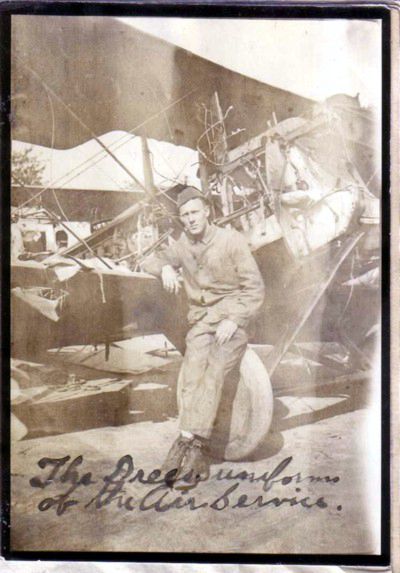
Arthur Smith, Private, Air Service, Tippecanoe County, Indiana
Entered service Feb, 16,1918. Stationed at Columbus Barracks, O., Sent to recruiting lines at Kelly Field, Tex., and ten days after arrival, was placed in the first Omaha Detachment and transferred into the 14th Balloon Corps. After four months of training, he was sent to the port of embarkation at Morrison, Va., where he was transferred to 28th Balloon Corps. Was ill for a time and after his recovery was sent to Camp Lee Hall, Va. His company, with four other companies, built the U. S. Army Balloon School, at a branch of Camp Eustis, Va. On Christmas Day, 1918, was sent to Aberdeen Proving Grounds, Md., where he was assigned to special work of testing some new devices. Born at Logansport, Ind., May 16, 1899, son of Joseph William and Jane Smith. Graduate of Indianapolis high schools. Home is Lafayette, Ind.
Harrison Dale Miller, Sergeant Major, Marion County, Indiana
Sergeant Major of Aviation Examining Board, Indianapolis Indiana November 16, 1917 to March 10, 1918. Served at Scott Field, Belleville, Illinois; Dayton Wright Airplane factory, Dayton, Ohio, April 7, 1918, to May 22, 1918; Ellington Field, Houston Texas, May 25 to July 5, 1918; Mitchel Field, Garden City, Long Island, New York from July 5 to December 11, 1918. Sergeant Major and Mitchel Field Long Island, New York, from July 10 to December 11, 1918.
Was on duty requiring frequent and regular aerial flights per S. O. of Hdqtrs., 1st Provisional Reg. Was the only non-commissioned flier on the field. Participate in 354 hours of aerial flights with only one fall. Received honorary discharge per S. O. 300 HQ, Eastern department on December 11, 1918 from Mitchel Field, Garden City, Long Island, New York.
